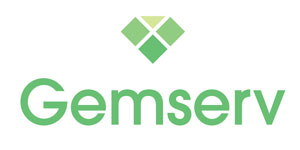Covid-19 response: An opportunity for transformation

The response to the Covid-19 pandemic presents an opportunity to accelerate the digital transformation of public services. Gemserv’s Head of Digital Transformation, Edward Williams, writes.
The digital transformation of public services has taken on a fresh impetus during the coronavirus pandemic; not only is there a need to dampen transmission by reducing the number and length of face-to-face interactions between citizens and government officials, but there’s also a requirement behind-the-scenes to keep members of staff apart too. Delivering services digitally also frees up staff from routine activities to support the special measures introduced to tackle the Covid-19 outbreak.
That drive to deliver digital transformation existed long before the lockdown though. In this digital era, the goal of many central and local governments is to be customer-focused and to deliver the best possible public services. To achieve the widespread digital transformation that’s required to drive these aims, it’s vital to invest in the necessary capabilities to ensure expenditure is concentrated on the appropriate services and systems – and to make sure they’re aligned to a digital vision and strategy. It is also critical to identify ways of achieving transformation at an accelerated pace, now more so than ever during the response to Covid-19.
Indeed, historically this technology-led change and, more recently, digitalisation have been viewed as the answer to many of the challenges facing governments, including: engaging with their citizens and ensuring their services are actively used; automating often time-consuming and paper-based processes; breaking free of contractual obligations and legacy systems that were not designed for digital; and working with ever-reducing budgets to achieve more services or the classic mantra of ‘deliver more with less’.
Gemserv has observed all these trends during its work with many governments and public sector organisations as together we’ve strived to achieve their digital ambitions. Our work in Ireland has included partnering with Bord na Móna, ESB and the Commission for Regulation of Utilities. Across the Irish Sea, we’ve also worked with the Cabinet Office, Crown Commercial Services, the Department for Business, Energy and Industrial Strategy, the Department for Work and Pensions; the Scottish Government and Highlands and Islands Enterprise; and the governments of Jersey and the Isle of Man.
Focus on change, not just solutions
There is often a tendency to focus on the technology aspects of the process; this can achieve a degree of digitalisation, but no meaningful transformation. It only delivers solutions, not change. Gemserv’s experience has shown that consistency is king; citizens care little about the internal organisation of government but instead want good digital services that will often cut across existing government departments.
Citizens require their public services to be as good as their digital experiences in the private sector. After all, why should filing a tax return or paying car tax not be as slick and easy as picking a series on Netflix or selecting a tune on Spotify? These are the benchmarks that members of the public now expect, and they’re prepared to simply shop elsewhere if they don’t like what is on offer. While they cannot readily go elsewhere to consume public services, civil servants and public officials are still subject to rigorous scrutiny and accountability, and the final sanction against their political bosses comes at the ballot box.
Many citizens interact with their governments infrequently; for some, it maybe comes just once a year, when they submit their tax return, or even less frequently if they are simply changing their home address. No-one wants to change their address multiple times with different departments. Simply telling the Government once should be enough to allow information to cascade to all departments.
Leading from the front
Achieving this consistency for infrequently used services is a challenge, and so governments require digital champions and strong leadership. Some administrations focus on creating cross-departmental agencies, such as the Government Digital Service (GDS) in the UK or the Chief Operating Office (COO) in Jersey. In Ireland, a department such as Public Expenditure and Reform could champion cross-government initiatives.
In Jersey, Gemserv’s work focused on designing a digital platform capable of supporting government services online. This involved a set of reusable components, including a digital identity, a systems integration capability to allow legacy applications to be utilised, and corporate data assets accessible across government.
Delivering digital technology in government can be achieved through developing services inhouse, building them to meet stringent standards across user experience, performance, privacy and cybersecurity. The Estonian Government is recognised as a world leader in this regard.
An alternative is to work with existing service providers and commercial off-the-shelf products to achieve the same goal. This allows digital services to be more easily recognised by citizens, as they use them in more regular environments, from banks to supermarkets. Gemserv has experience in supporting governments in both regards.
Cadence and ‘fail fast’ benefits
A predominant feature of digitalisation is cadence, which is created by iterating through several small releases, and adopting a ‘fail fast’ approach, just like the best technology start-ups. It can be difficult to discern the final requirements at the start of a programme. Any approach needs to be adaptable and attuned to an agile delivery or it can lead to poor decisions being made about value or to a decision to buy a solution too early. One answer is to focus on procuring capability, such as service design, rather than the more traditional approach of buying a solution. Gemserv’s work with the Scottish Government on its digital identity programme took such an approach.
Gemserv has been at the forefront of the digitalisation of regulations in the Great Britain energy market. It delivered a platform that allowed the codes for which it is responsible – including the Smart Energy Code, to which all parties involved in the smart meter industry must adhere – to become available online. This work went beyond simply making the code available through a website; to be truly digital, the regulations needed to be available when required, personalised, contextualised, and pushed when relevant.
To achieve these goals, Gemserv turned the code regulations into easy-to-access, machine-readable formats to make them available when needed. A metadata model based on the industry requirements was added, which allowed for personalised delivery to particular parties.
All this work may involve technology but, more importantly, it’s all about people, both the end-user and the customer. Gemserv always engages with its customers regularly to ensure that its work is achieving their objectives. Without this, our company cannot be sure it has delivered a successful solution – one that is truly digital.
Perhaps one of the lasting legacies of the Covid-19 response will be the shift to digital services. Working from home has proved to many employers that digital technology can be trusted to allow their employees to be productive outside the office; the next step will be for governments to embrace the digitalisation of public services to offer similar benefits and efficiencies.
For more information:
T: +353 (0) 86 044 1458
E: Sarah.fuller@gemserv.com
Edward Williams, Head of Digital Transformation
Edward has over 30 years’ experience working with leading edge and innovative technologies to realise business benefit. He leads Gemserv’s digital services practice and works with clients to define and deliver their digital strategies, ensuring they align with the goals of their business. He has held many enterprise architecture roles, leading teams to deliver business, technology and security architectures, on varied projects in the government, health, energy, transport, financial and legal sectors.






